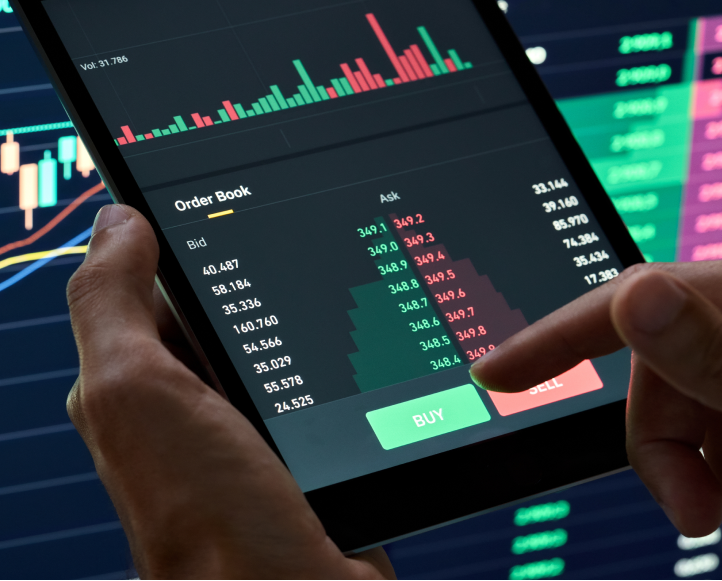
Crypto Trading Analysis: Unveiling Trends and Strategies
In the rapidly evolving landscape of cryptocurrency, a solid understanding of Crypto Trading Analysis click here can make the difference between profit and loss. As digital assets continue to gain popularity, traders must stay informed about market movements, technological advancements, and macroeconomic factors that can influence prices. In this article, we will delve into the key components of crypto trading analysis, including fundamental analysis, technical analysis, and market sentiment.
1. Understanding Crypto Trading
Crypto trading involves the buying and selling of cryptocurrencies with the aim of making a profit. It differs from traditional stock trading due to various factors such as market volatility, lack of regulation, and the technological underpinnings of blockchain. Traders can engage in different types of trading, including day trading, swing trading, and long-term investing. Each strategy requires its own approach to analysis and risk management.
2. Fundamental Analysis
Fundamental analysis focuses on evaluating a cryptocurrency’s intrinsic value by examining various economic, financial, and other qualitative and quantitative factors. Here are some key components of fundamental analysis in crypto trading:
2.1 Technology and Use Case
A cryptocurrency’s underlying technology and its use case are critical in determining its value. Projects with clear utility, innovative solutions, and strong development teams are often more attractive to investors. Understanding the technology behind a cryptocurrency can provide insights into its long-term viability.
2.2 Market Demand and Supply
Just like any other asset, the price of cryptocurrencies is influenced by supply and demand dynamics. A limited supply, as seen in Bitcoin’s capped issuance, can lead to increased prices when demand surges. Tracking market trends and investor sentiment is crucial to predicting potential price movements.
2.3 Regulatory Environment
The regulatory landscape surrounding cryptocurrencies can greatly impact their adoption and price stability. News about regulations, government interventions, or legislative changes can create volatility in the markets. Traders must stay abreast of regulatory developments within their jurisdictions and globally.
3. Technical Analysis
Technical analysis (TA) involves studying price charts and using statistical indicators to forecast future price movements. Unlike fundamental analysis, TA is primarily based on historical price data, aiming to identify patterns and trends. Key elements of technical analysis include:
3.1 Price Charts
Charts form the foundation of technical analysis. Traders commonly utilize candlestick charts to visualize price movements over specific time frames. By analyzing these patterns, traders can recognize bullish and bearish trends and apply different strategies accordingly.
3.2 Indicators and Tools
Several technical indicators can aid in analyzing price movements: Moving Averages, Relative Strength Index (RSI), Bollinger Bands, and Fibonacci Retracement levels are among the most commonly used. Each of these tools has its strengths and can help traders make more informed decisions.

3.3 Volume Analysis
Volume is a critical factor in crypto trading, as it indicates the level of interest in a particular asset. High trading volume often accompanies significant price movements, serving as confirmation of buyers‘ or sellers‘ strength. Monitoring volume patterns can enhance a trader’s analysis and predictions.
4. Market Sentiment
Market sentiment reflects the overall attitude of traders and investors towards a specific cryptocurrency or the market as a whole. Sentiment analysis helps traders gauge potential market shifts and is often derived from news articles, social media posts, and community discussions. Tools such as sentiment analysis platforms can provide insights into current market emotions.
4.1 News Impact
News can significantly affect market sentiment—positive developments can lead to price surges, while negative news can result in sharp declines. Traders must stay updated on the latest news and events to anticipate potential market reactions.
4.2 Social Media and Community Engagement
Social media platforms, such as Twitter and Reddit, have become primary sources of information and sentiment for crypto traders. Monitoring popular discussions can provide insights into the prevailing sentiments, helping traders make more informed decisions.
5. Risk Management
Regardless of the trading strategy employed, effective risk management is paramount. Here are some strategies to consider:
5.1 Setting Stop-Loss Orders
Stop-loss orders can help mitigate potential losses by automatically selling a cryptocurrency when it reaches a specified price. This is crucial in a volatile market like crypto, where prices can fluctuate wildly.
5.2 Portfolio Diversification
Investing in a mix of cryptocurrencies and other asset classes can help spread risk. Diversification reduces the likelihood of significant losses from a single failing investment.
5.3 Position Sizing
Determining the size of each trade relative to your total investment capital helps manage potential losses. Position sizing involves only risking a small percentage of your portfolio on each trade, providing a greater buffer against market volatility.
Conclusion
Crypto trading analysis is a multifaceted discipline that combines fundamental analysis, technical analysis, and an understanding of market sentiment. By mastering these elements, traders can enhance their ability to make informed decisions in a dynamic and often unpredictable market. As the crypto landscape continues to evolve, staying educated and adaptable remains essential for successful trading.




